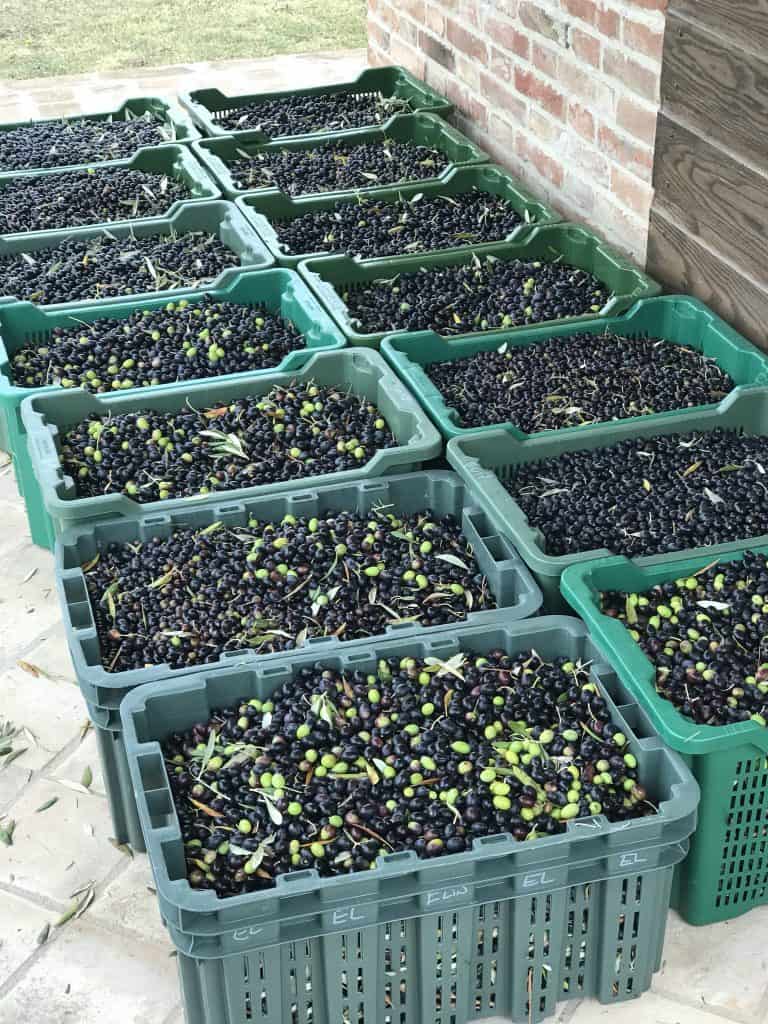
If I seem a little tired this week, it’s because I spent most of last week climbing trees. Almost 100 trees to be exact. Was I having a childhood flashback? Nope. I was climbing olive trees. As I’ve mentioned before, in Italy, olive oil is special. This is especially true in Umbria, where the area is known for making the best olive oil in all of Italy.
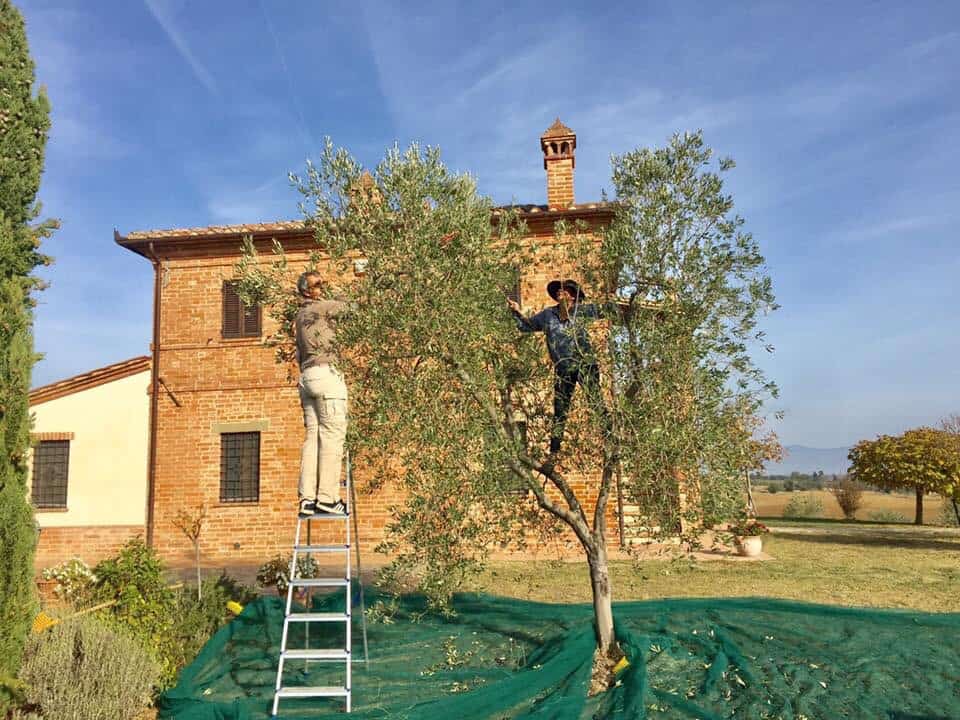
Olive picking in Italy will always hold a special place in my heart. Five years ago, Pete and I got engaged after two long days of olive picking (oh, when the trees were small!).
But every year is different. The last two years have been quite sad in Umbria. Between the weather and a tiny annoying bug that destroyed the olive crops, things have been bleak in the olive world. This year was looking like more of the same heartbreak. It was too hot this year. Much too hot. The weather was so hot for so long and without rain that everyone thought that the olives were done. Cooked. Finished. Finito. There would be nothing to press in October and November.
But lo and behold, while many people did not have olives this year, some of us did. Not only did we have olives, we had olives that were mostly oil and very little water (thanks to the heat and dry weather). So this fall, convinced (and told) that there would be no olives, I told my olive-picking friends to stay home. Pete and I decided to do a long weekend hiking the Cinque Terre (posts to come). I was quite shocked when I arrived to see that not only did I have olives, I had a ton of olives. Trees that I had planted 8 years ago, now 9 years old, were bursting with fat black olives.
That’s when the four stages of olive picking started.
Stage 1: Overwhelmed
I arrived and walked out to the olive grove. I had no one to blame but myself for calling off my olive-picking friends and booking a weekend getaway. Okay, I thought, get a start on this before you go meet Pete. I attacked the first tree with gusto. A mere 20 minutes later, I had the tree stripped and was ready to start the next tree. Okay, I thought, maybe this won’t be so bad. The next, much smaller tree? Well that took 1 hour and 25 minutes to pick. Three not so large trees took me 2 1/2 hours to pick. And the basket, well, I hadn’t even filled 1/4 of the 25 kg basket. That was when the overwhelmed feeling set in. How was I possibly going to do this?
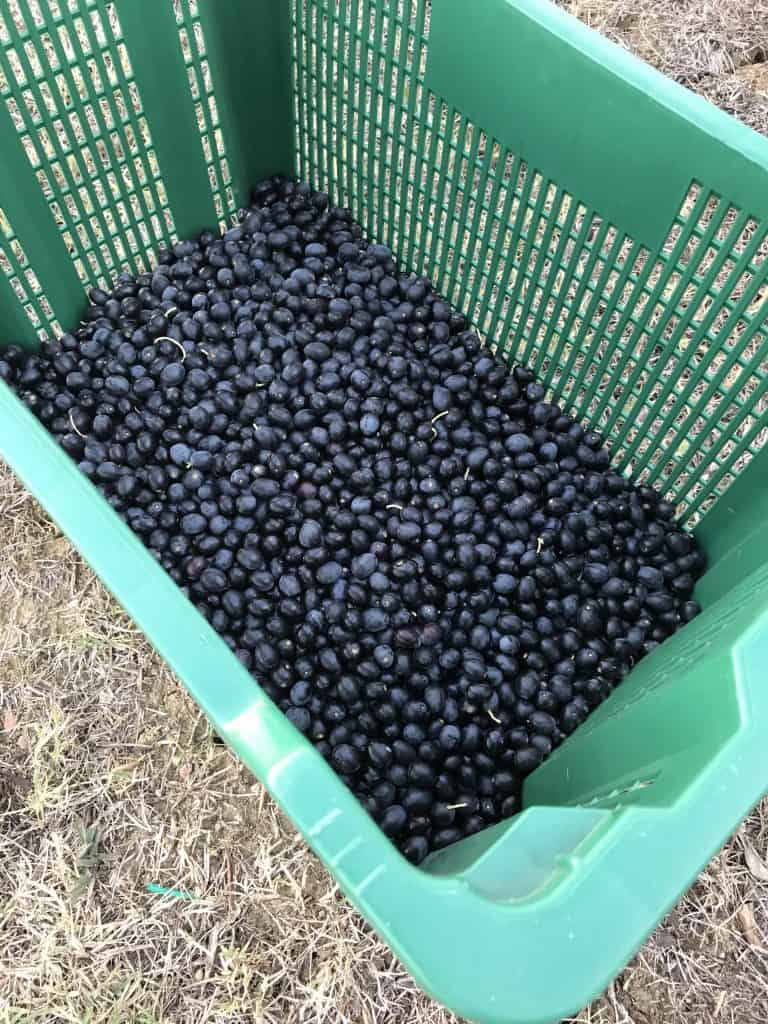
The next day, back at it, some friends arrived (thank you Nancy and Lynn) to help! They were joined by a few more (thank you Fran and Michael) and we all picked for a few hours before breaking for lunch. More friends drop by (thank you Sarah, Peter and Abby) and we manage to strip a few more trees of their black orbs prior to losing the light!
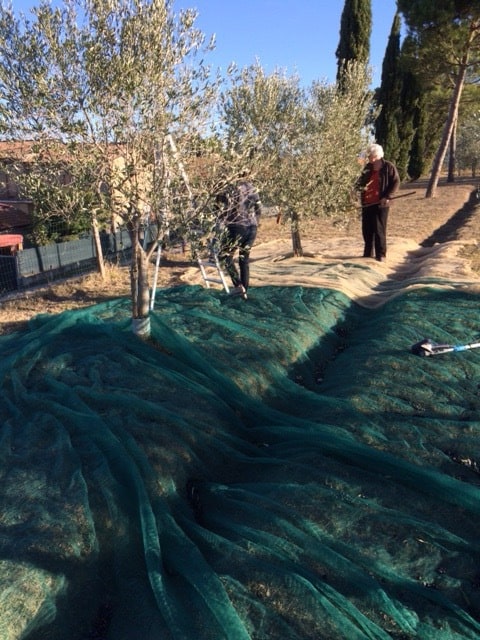
More picking after lunch and then a half day on Saturday. 20 trees done, 125 kg (ballpark) picked. Overwhelmed was the right word, and to be honest, a little panicky.
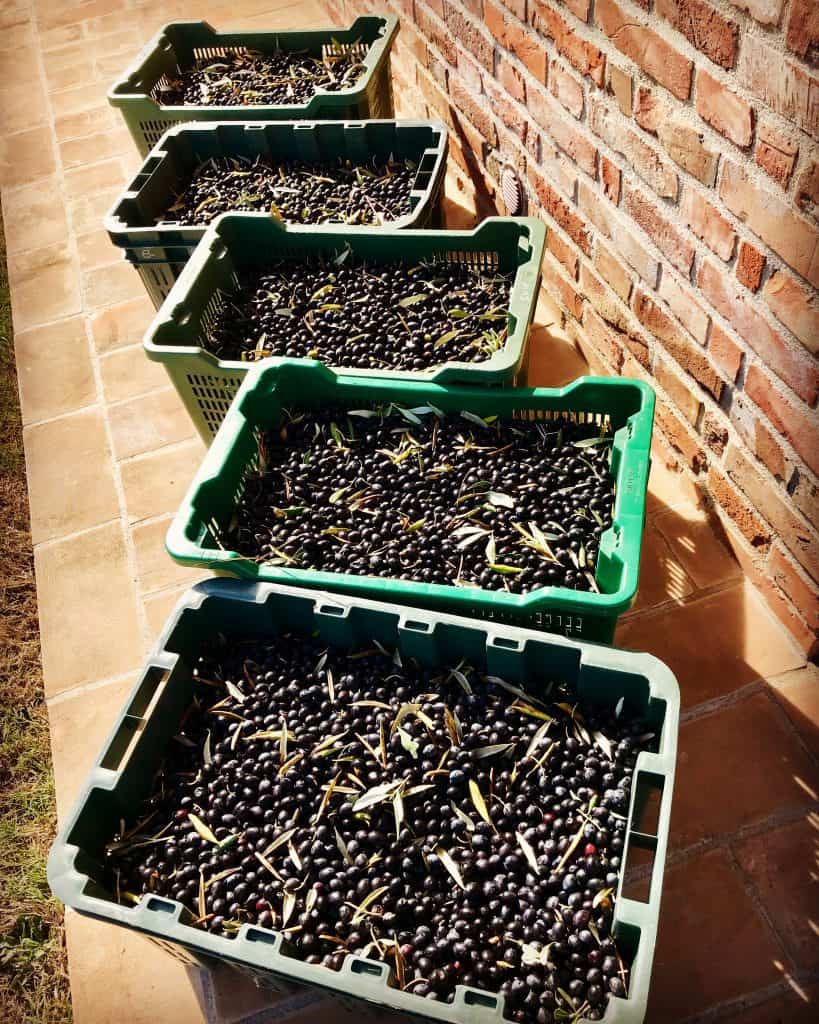
Stage 2: Determined
Okay, the Cinque Terre break is over and we are back at it. Pete is now here to help. Let’s get going! A few hours on Tuesday and an early start Wednesday. Friends arrive, more picking, about 48 trees done in total. We can do this!
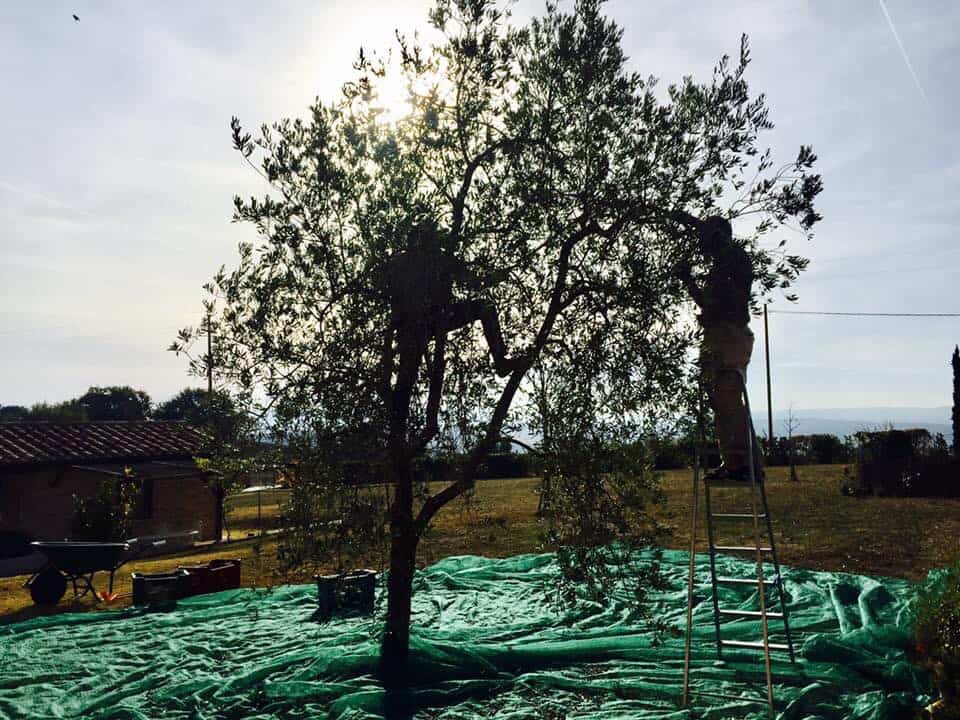
Thursday! We are determined! Matteo and Giovanna, our friends from Milan, have arrived to take a long weekend in the country (thank you!). Yes! More hands! Lynn and Nancy arrive again (thank you!) as well as our friend Sarah. Nets abound, rakes out. The nets are spread beneath the trees so we can rake or strip the olives off the branches to the nets down below.
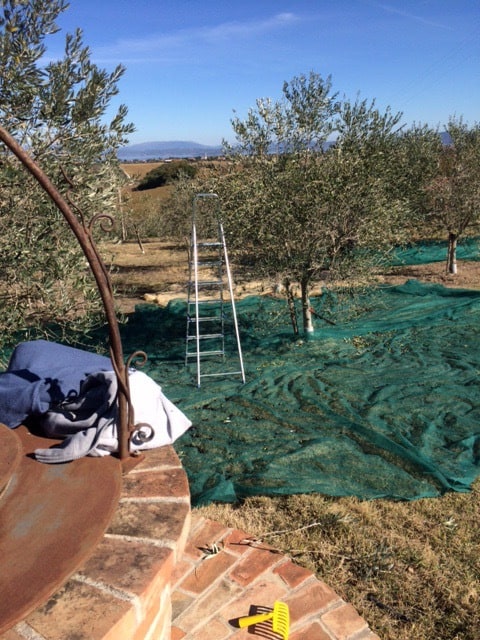
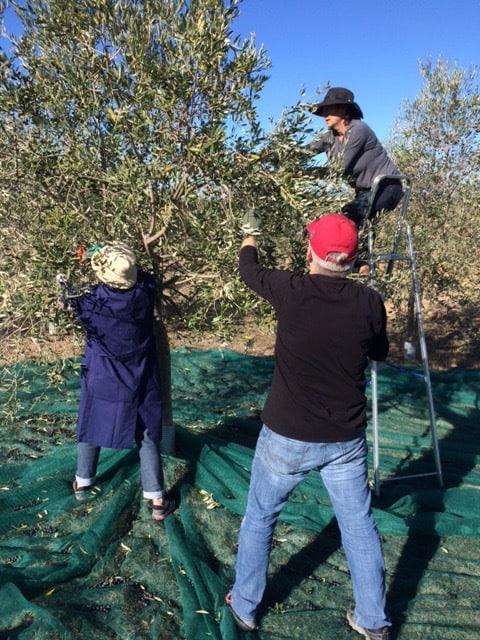
The nets are large and heavy, so moving them from section to section is a process. The trees are picked by hand or by rake, and sometimes using our newly bought (with Fran and Jan) tree threshing machine. I’m up a ladder picking the tall, hard to reach olives that are hiding, trying to stay put. Nancy is determined that we finish the remaining grove by end of the day! We are determined to get this done.
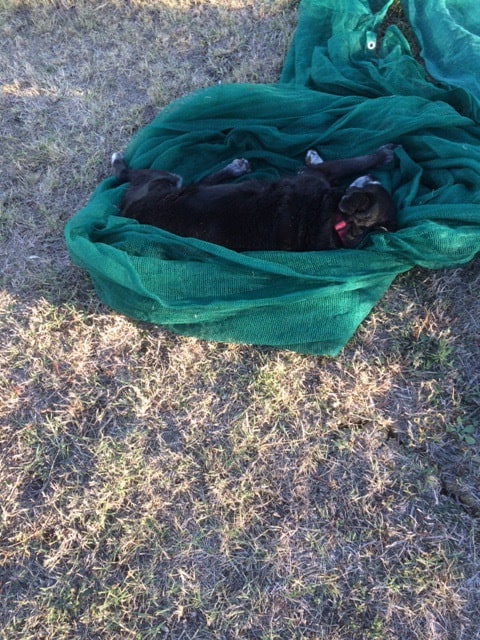
Surprisingly, we managed to crush through the last 50 trees. Prosecco poured and a toast to all for all the help!

Stage 3: Elation
Once all the trees are picked, the baskets are then taken to the local frantoio (fran-toy-o), which is the mill for the pressing. Just like going to the doctor, you must book an appointment to press. Our appointment is Friday at 3:30 pm. A few hours before pressing time, Bob shows up to escort our olives to the frantoio where they have their pressing date!
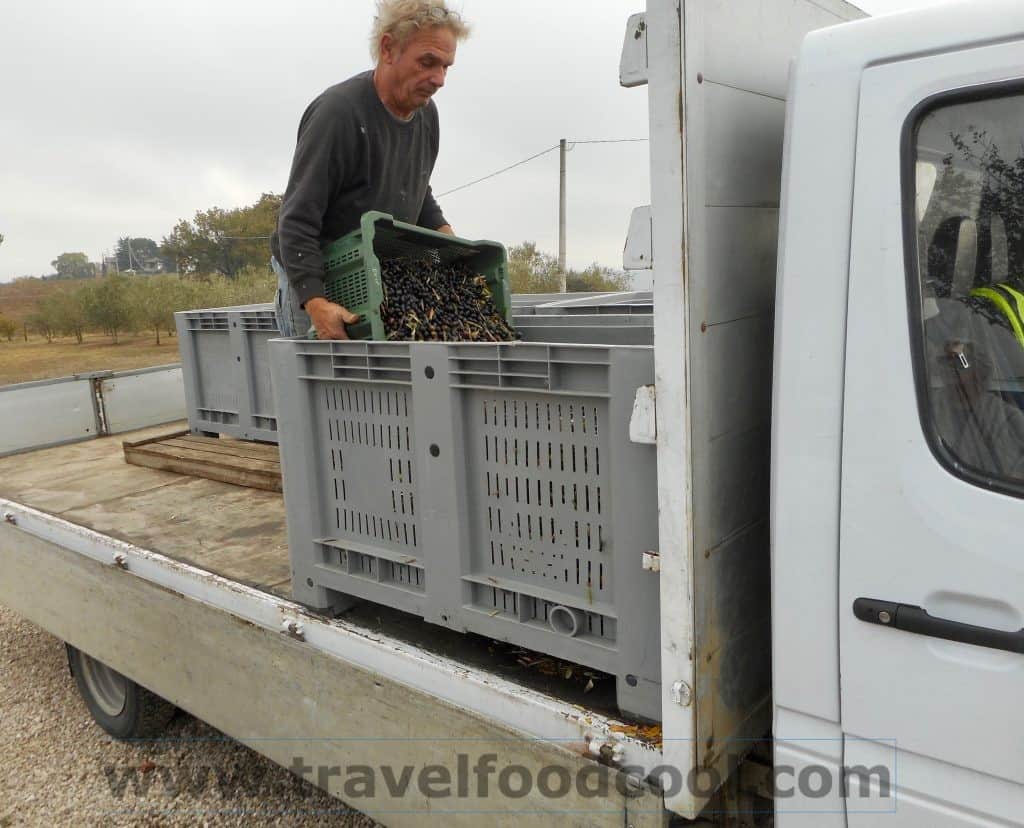
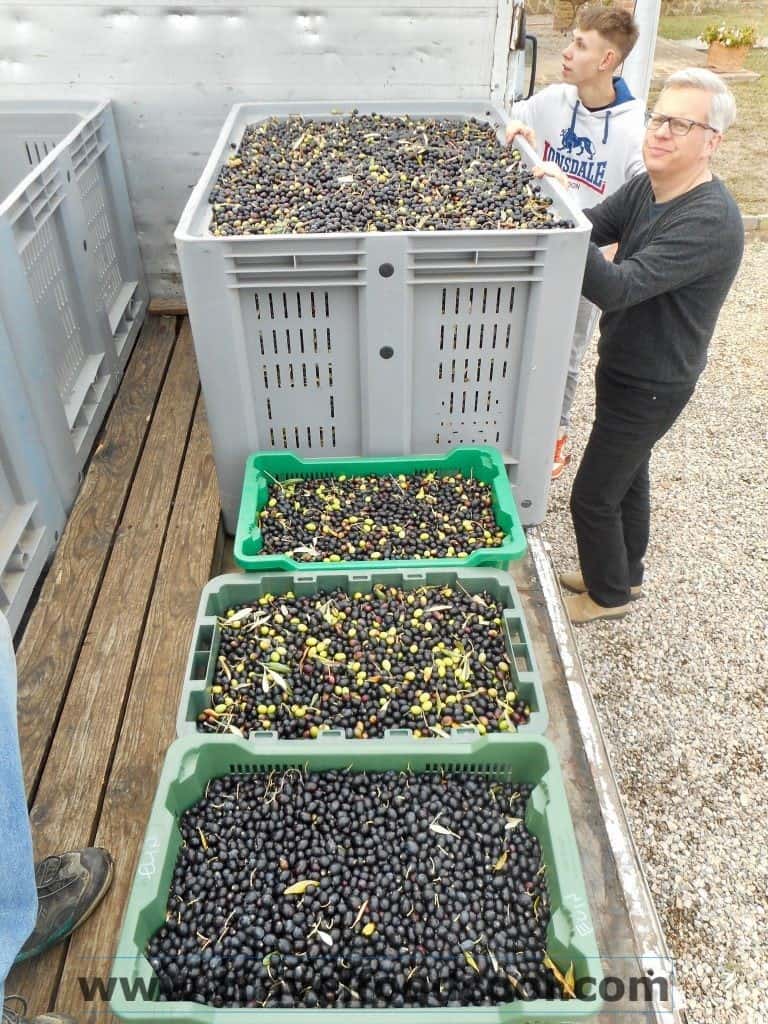
The day – or night, as during olive season the frantoio works around the clock – of your pressing, you show up and dump your baskets of olives into the funnel pit, which also weighs the olives. We are extremely excited! We have 357 kg of olives!
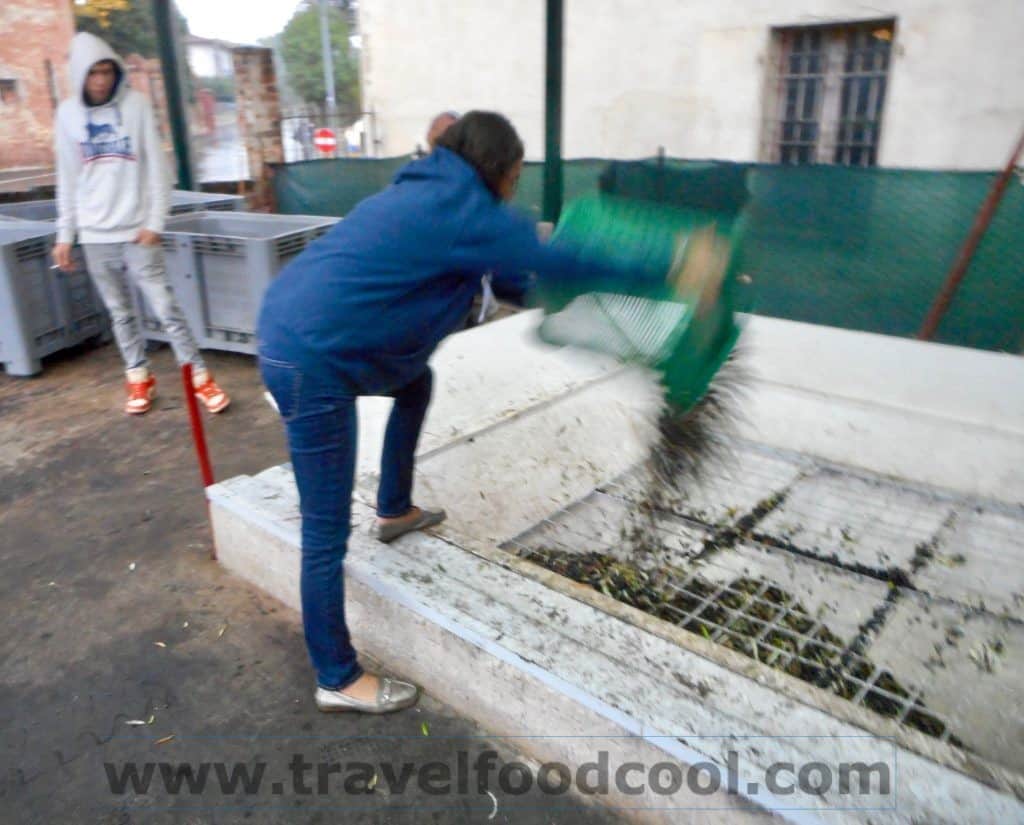
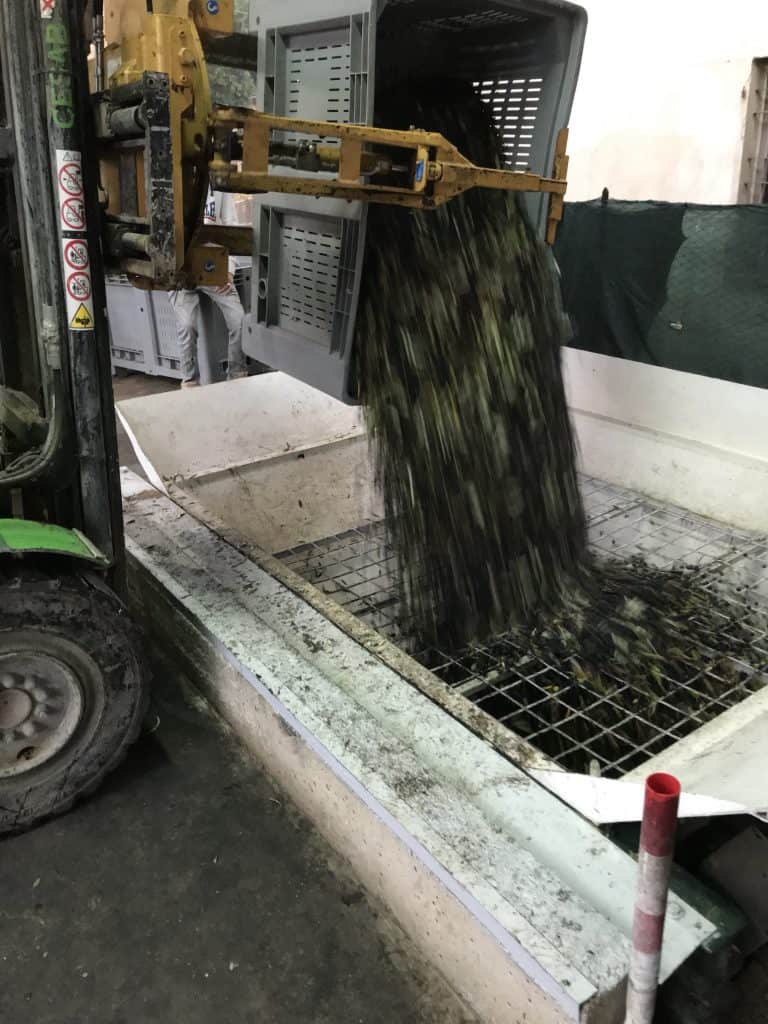
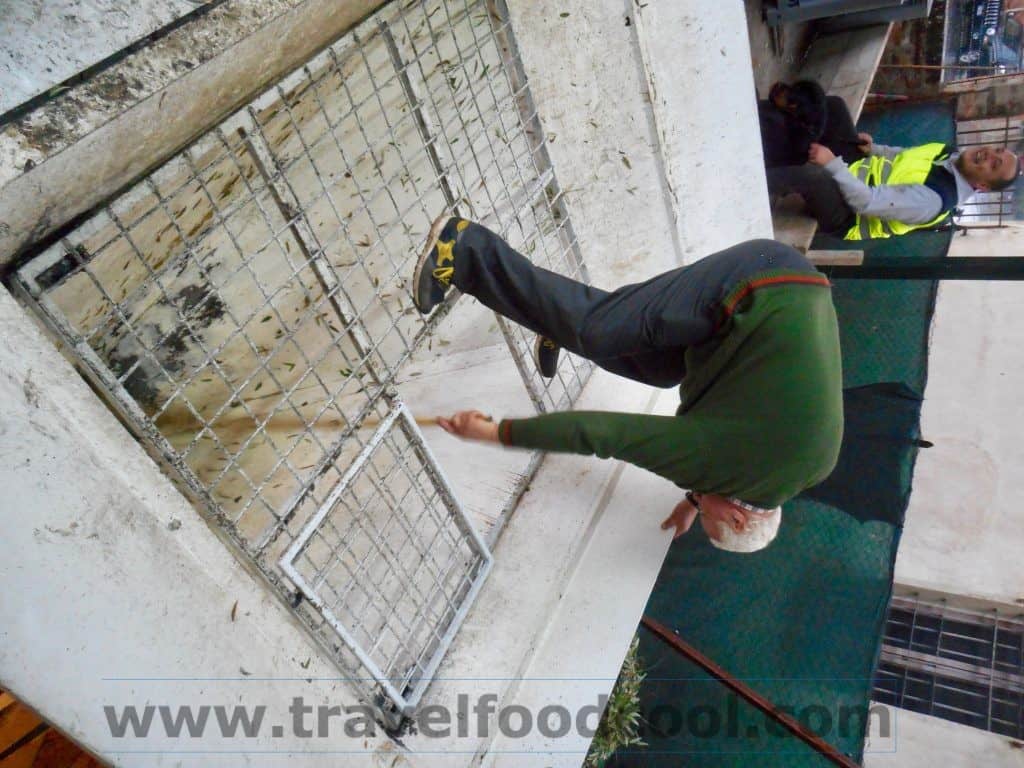
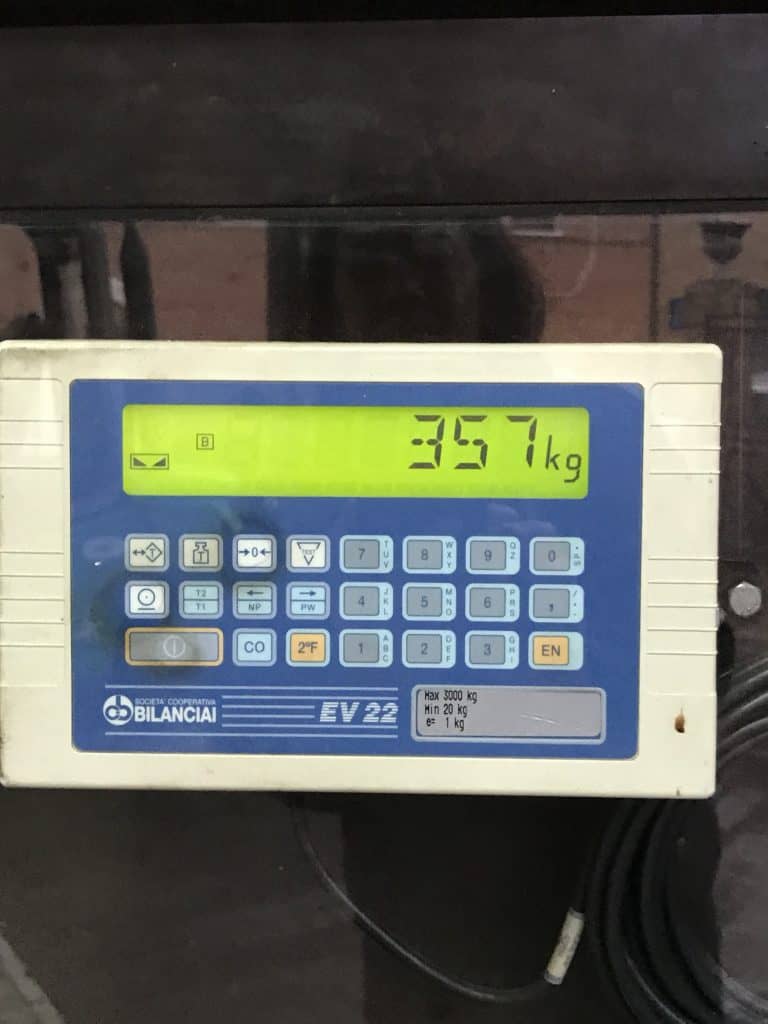
From there, the olives ride up a conveyor belt where they are put through a washer and washed with water to clean the olives and remove the leaves, stems, twigs and other debris.
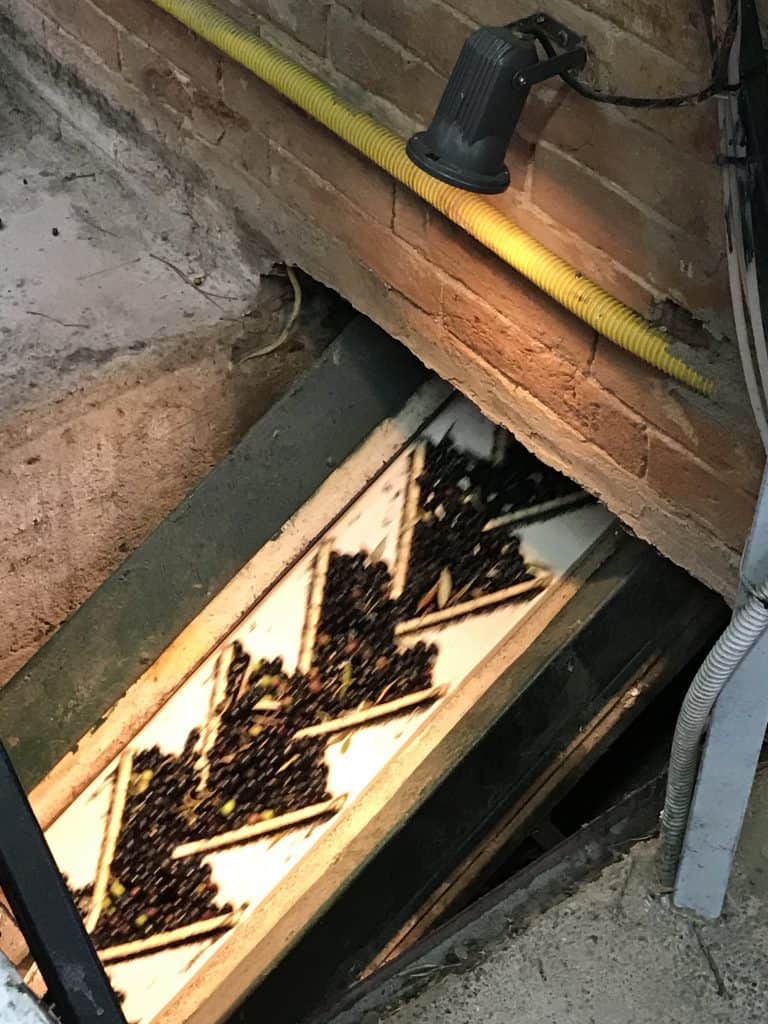
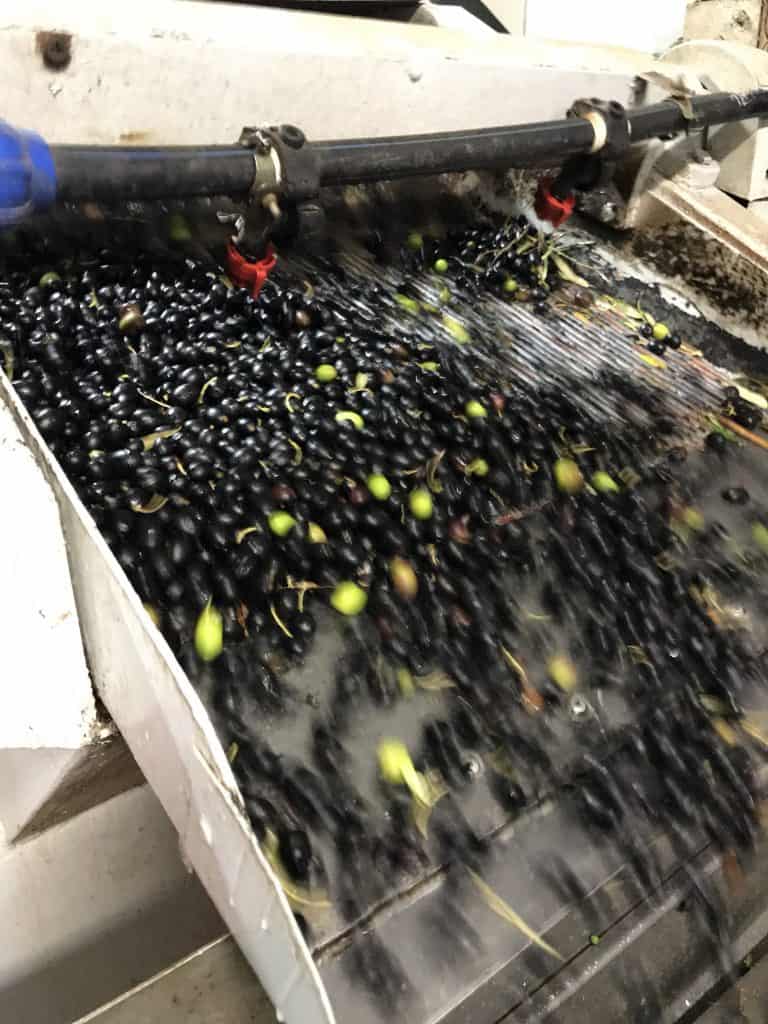
The olives move to the crushing tank where they are crushed into paste. The crushing tears the cells to help with the release of the oil. After 60 minutes of “malaxing” or mixing the paste in the crushing tank, they are ready to release their green goodness.The oil travels from the crushing tank and is separated by centrifuges from the rest of the olive wet paste.
The oil then pours into an open tank for skimming. The skimming is done by hand and the oil is poured into containers and sealed.
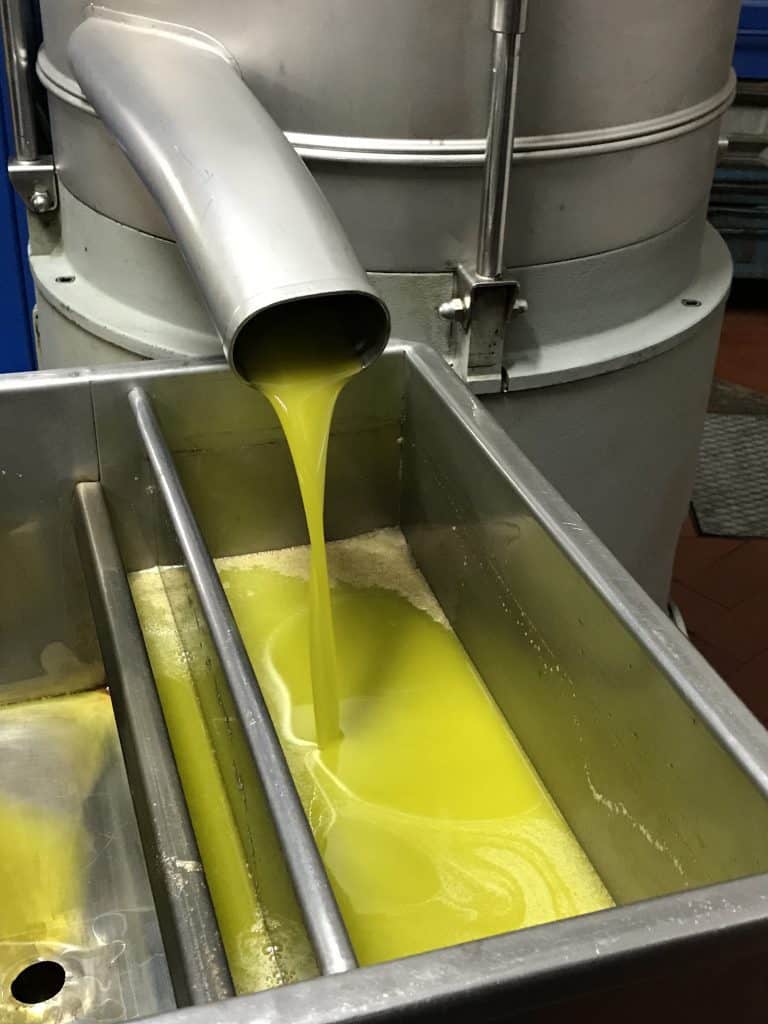
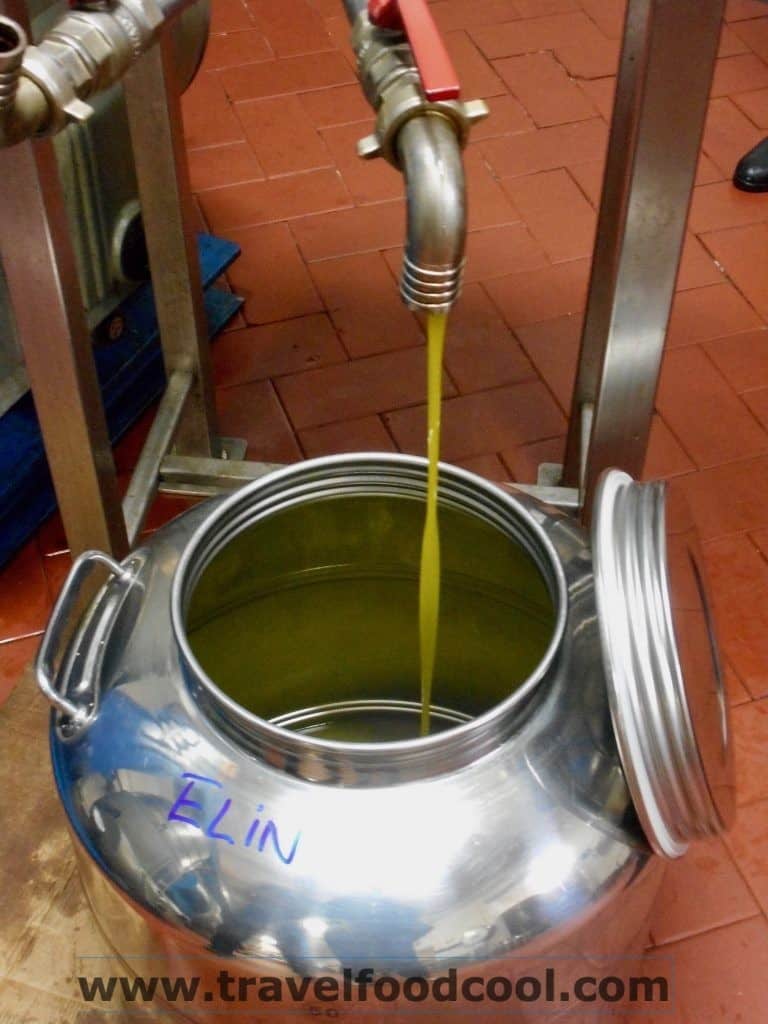
The containers are placed on a scale and the oil is weighed. They calculate the RESA based on olive weight in and production out. Most years the RESA is around 8-12%. This year, due to the lack of rain, the olives are mostly oil. People are getting high RESAs, we heard some people have got 20 or 23 % even! Incredible.
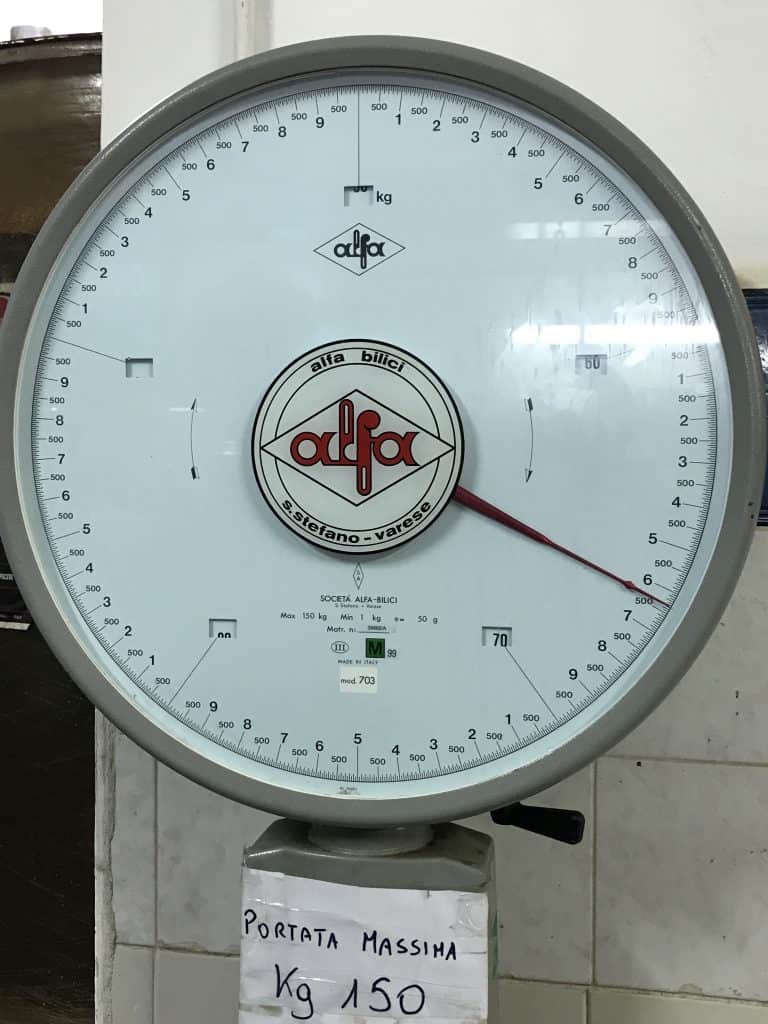
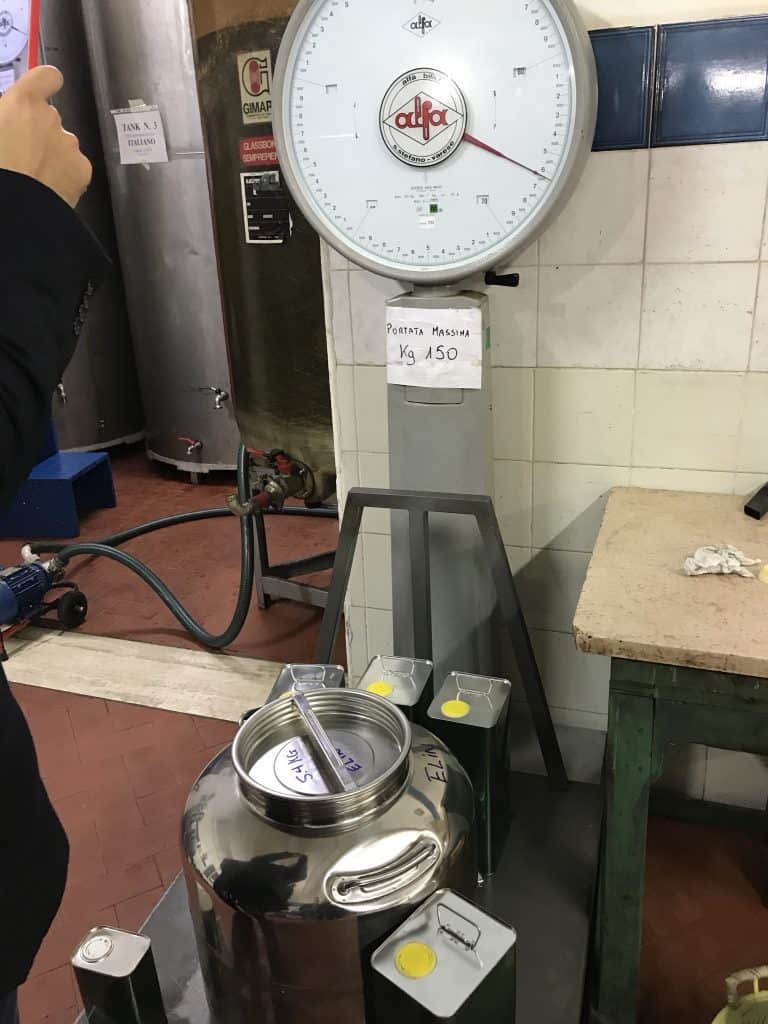
Some statistics from this pressing: 347 kg of olives resulted in 71 litres of olive oil. A RESA of 16.6%! The oil has a beautiful green colour and a slight peppery taste! Success!
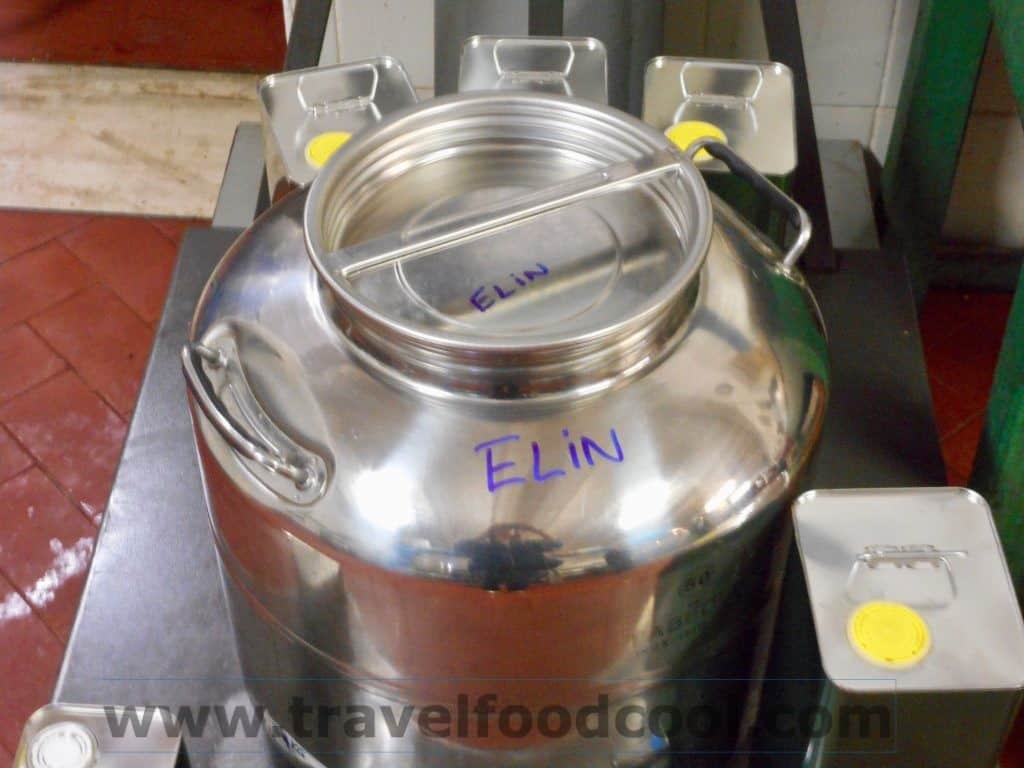
Stage 4: Exhaustion
After all is said and done and you have gone home with your new containers of oil to dip into bread (the taste is incredible!), you realize that you are exhausted! You try to spend a few days sleeping in, but your dreams are filled with olive picking. This too will eventually pass. Appointments are made for the trees to be trimmed and shaped (ideally, they should be shorter and airy inside, like a bowl), to get them ready for the next season.
Next year, I have my fingers crossed that the harvest will be good. I’m already starting to arrangeolive pickers now!
It really is all about the olives, but when you taste the oil, it’s worth the labour of love!
Want to see what the pressing looks like? Watch the video!






















Very very cool. Once again you startle the world with your seemingly unlimited ability to do any number of things.
Awww! Thanks! (It was the climbing trees part, wasn’t it?!)